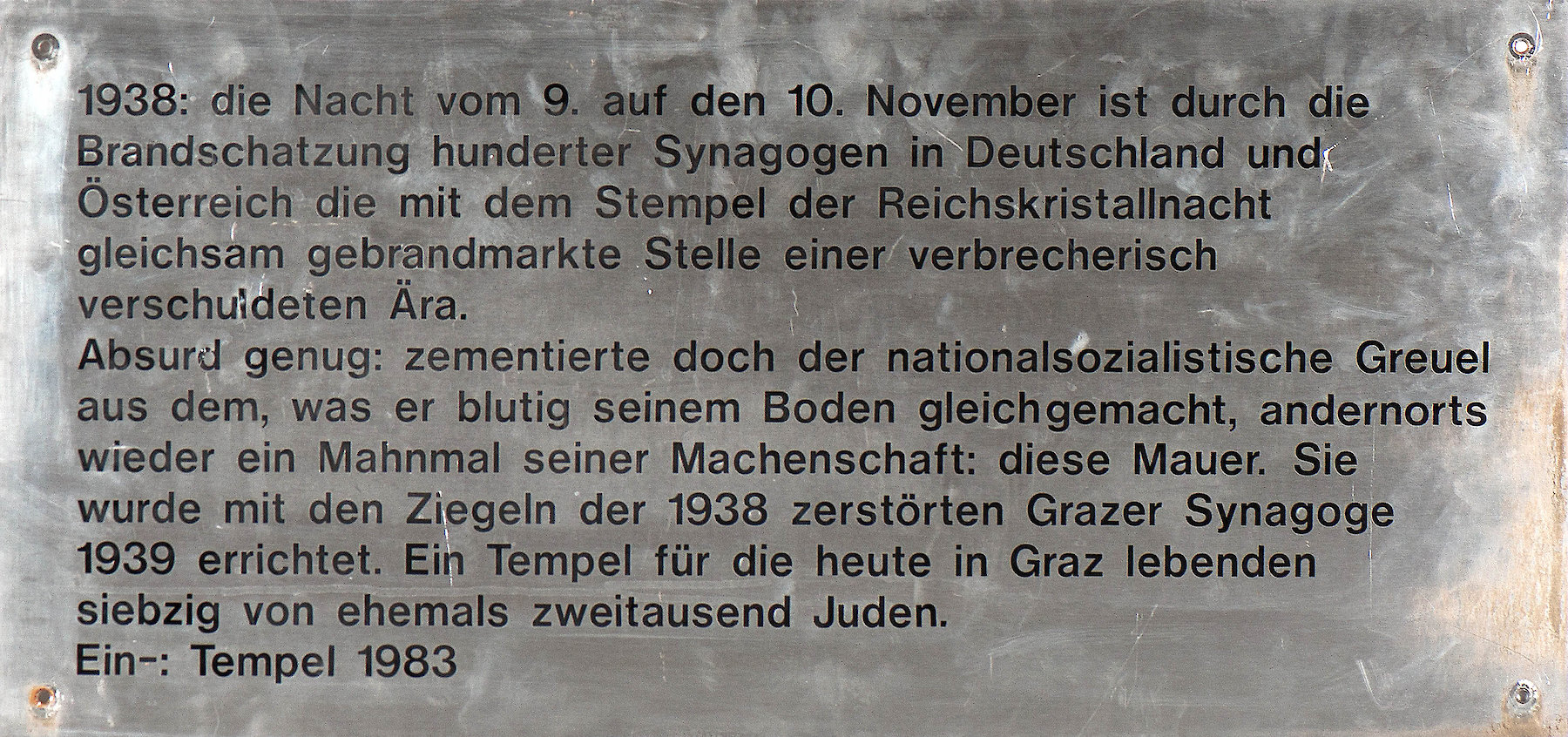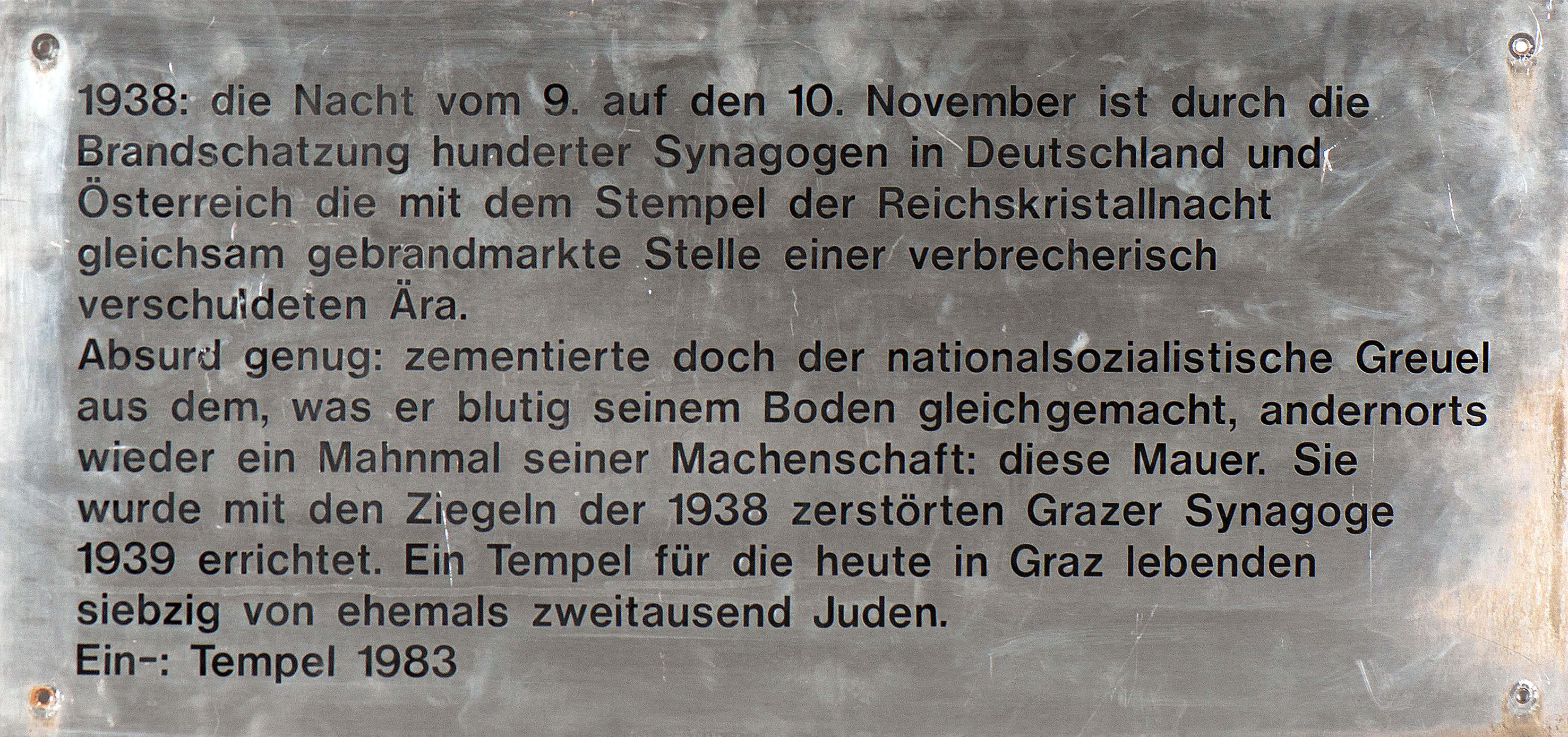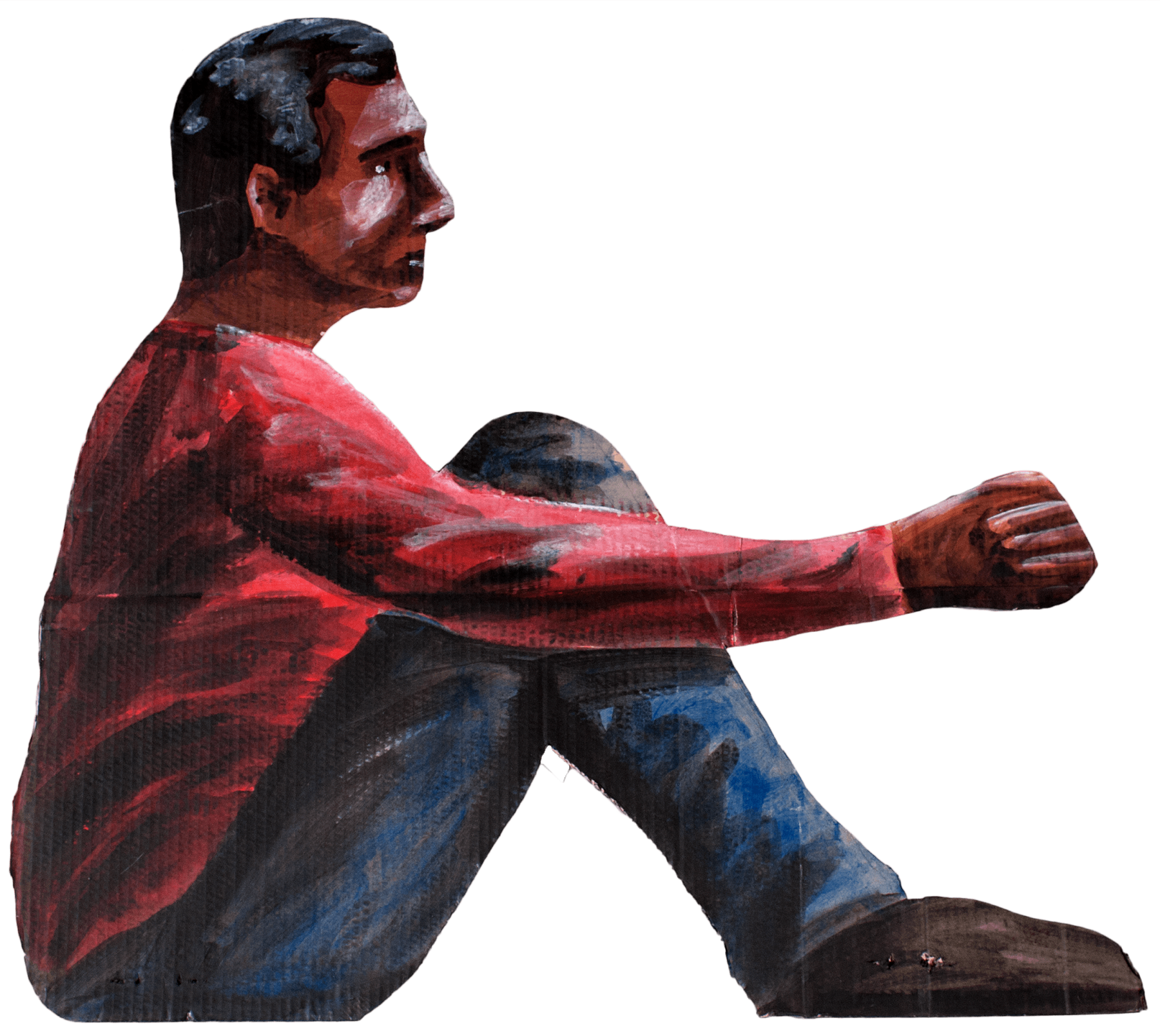

Memento 1938/83 Fedo Ertl, 1983
Building Block Action Against Forgetting
With the uncovering of a wall with original bricks made of bricks of the Graz synagogue, which had been destroyed in the November Pogrom Night, Fedo Ertl prepared the ground for the re-erection of the synagogue under Mayor Alfred Stingl in 2000. The bricks were removed, cleaned together with students of the HTL Ortweinschule and reused in the construction of the new synagogue. Fedo Ertl was one of the first to use art to commemorate the victims of Nazi terror and to address the lack of public work of mourning.
Engraved metal
38 × 80 cm
Graz Museum
Art as a Basis for Discussion
The Graz-based artist Fedo Ertl (1952–2014) was one of the first socio-political artists to dedicate his work to coming to terms with Nazi crimes. Ertl created the unique memorial “Memento 1938/83” on his own initiative. His specific goal was to use the means of art to initiate a concrete discussion about the reconstruction of a synagogue in Graz. For this purpose, the artist tried to win over the Jewish community as fellow combatants. Its reaction was hesitant at first. There were too many fears that a public art project would lead to anti-Semitic activities.
Fedo Ertl researched the whereabouts of the bricks of the Graz synagogue, which was brutally destroyed in 1938: In 1939 a wall and a garage in Alberstraße were built with them. As an art installation, Ertl excavated part of this brickwork—a layer of oblivion—and attached the metal plaque to inform the public about the significance of the bricks. With this slightly provocative but clear gesture, he created a unique temporary memorial and successfully launched the initiative to rebuild the synagogue.
